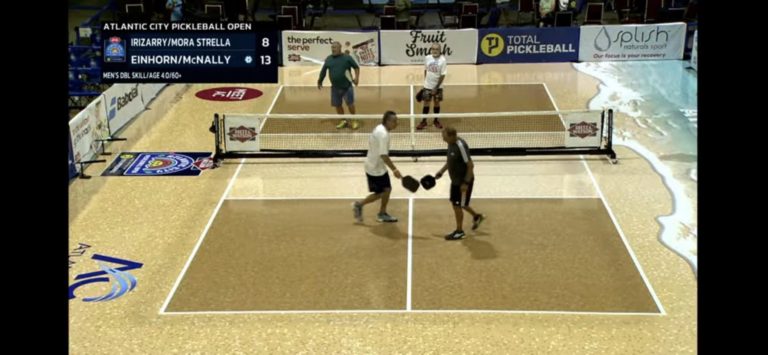Pickleball is a fast-paced and exhilarating sport that has gained immense popularity in recent years, particularly among older adults. It’s a game that requires quick reflexes, sharp movements, and precise shots. One of the essential aspects of pickleball is having quick reflexes and reaction time. Without these skills, it can be challenging to compete at a high level.
Whether you’re an amateur player looking to improve your skills or a professional player wanting to take your game to the next level, there are many ways to enhance your pickleball reflexes and reaction time. In this article, we will discuss some tips and techniques that can help you become a more effective and competitive pickleball player.
1. Warm-Up and Stretching
Before starting any physical activity, it is vital to warm up your muscles and stretch properly. Warming up helps increase blood flow to your muscles, which can improve your reaction time. Stretching also helps to improve your range of motion and flexibility, which can help you move more quickly and easily on the court. Some basic warm-up exercises you can try include jogging in place, jumping jacks, and lunges. For stretching, focus on your legs, arms, and shoulders.
2. Train Your Reaction Time
One of the best ways to improve your reaction time is by using a reaction ball. These balls are designed to bounce unpredictably, which means you have to react quickly to catch them. This type of training can help you develop the quick reflexes you need to react to fast-paced shots during a game. You can also try practicing with a partner who hits the ball at you from different angles and speeds, forcing you to react quickly.
3. Practice Eye-Foot Coordination
Pickleball is a game that requires precise movements and quick reflexes. One of the ways to improve your pickleball reflexes and reaction time is to practice eye-foot coordination. Eye-foot coordination refers to the ability to track the ball with your eyes and move your feet accordingly. To improve your eye-foot coordination, try practicing with a partner. Have them toss the ball to you in different directions, and practice moving your feet to get into position to hit the ball back. You can also use a wall or rebound net to practice hitting the ball in different directions and angles.
4. Focus on Anticipation
Anticipation is key in pickleball. You need to be able to read your opponent’s moves and anticipate where the ball is going to go. One way to improve your anticipation is to focus on the opponent’s body language and positioning. Watch their feet and body movements to try and predict where they will hit the ball. It’s also important to keep your eyes on the ball as much as possible to track its movement.
5. Use Reaction Time Drills
There are many drills and exercises you can do to improve your reaction time. One simple drill is to stand facing a partner with your hands at your sides. Have your partner toss a ball to you, and practice catching it with one hand as quickly as possible. Another drill is to stand with your back to a partner, and have them call out a direction for you to turn and catch a ball they throw to you. These types of drills can help improve your reflexes and reaction time.
6. Increase Your Agility
Being agile and able to move quickly on the court is crucial in pickleball. To improve your agility, try incorporating exercises like ladder drills, jumping drills, and cone drills into your training routine. These types of exercises can help improve your footwork and balance, which can translate to better movement on the court.
7. Visualize Your Shots
Visualization is a powerful tool for improving performance in sports. The more you can visualize yourself hitting the perfect shot, the more likely you are to do it in real life. Take some time to mentally rehearse your shots before you step onto the court. Picture yourself making the perfect return, hitting the ball at the exact spot you want it to go. The more vividly you can imagine it, the more likely you are to execute it when the time comes.
8. Improve Your Footwork
Footwork is an essential part of pickleball. Your ability to move quickly and efficiently around the court can make all the difference when it comes to reacting to your opponent’s shots. Work on improving your footwork by practicing drills that focus on agility, speed, and balance. You can also try incorporating ladder drills or jumping rope into your training routine to help you become more light on your feet.
9. Stay Alert
Pickleball can be a fast-paced game, so it’s essential to stay alert at all times. Keep your eyes on the ball and your opponent, and be ready to move at a moment’s notice. Try to anticipate where the ball is going to go based on your opponent’s body language and position on the court. The more alert you are, the more likely you are to make a quick and accurate return.
10. Practice Consistency
Finally, it’s essential to practice consistently in order to improve your reflexes and reaction time. Make time to practice pickleball regularly, and focus on specific skills like eye-foot coordination, anticipation, and agility. Set goals for yourself, and track your progress over time. With dedication and practice, you can improve your skills and become a more effective and competitive pickleball player.
Conclusion
Improving your pickleball reflexes and reaction time is essential if you want to become a better player. By incorporating these tips into your training routine, you can develop the quick reflexes, agility, and alertness you need to react quickly to fast-paced shots. Remember to practice consistently, visualize your shots, and focus on your footwork and reaction time, and you’ll be well on your way to becoming a pickleball pro.





